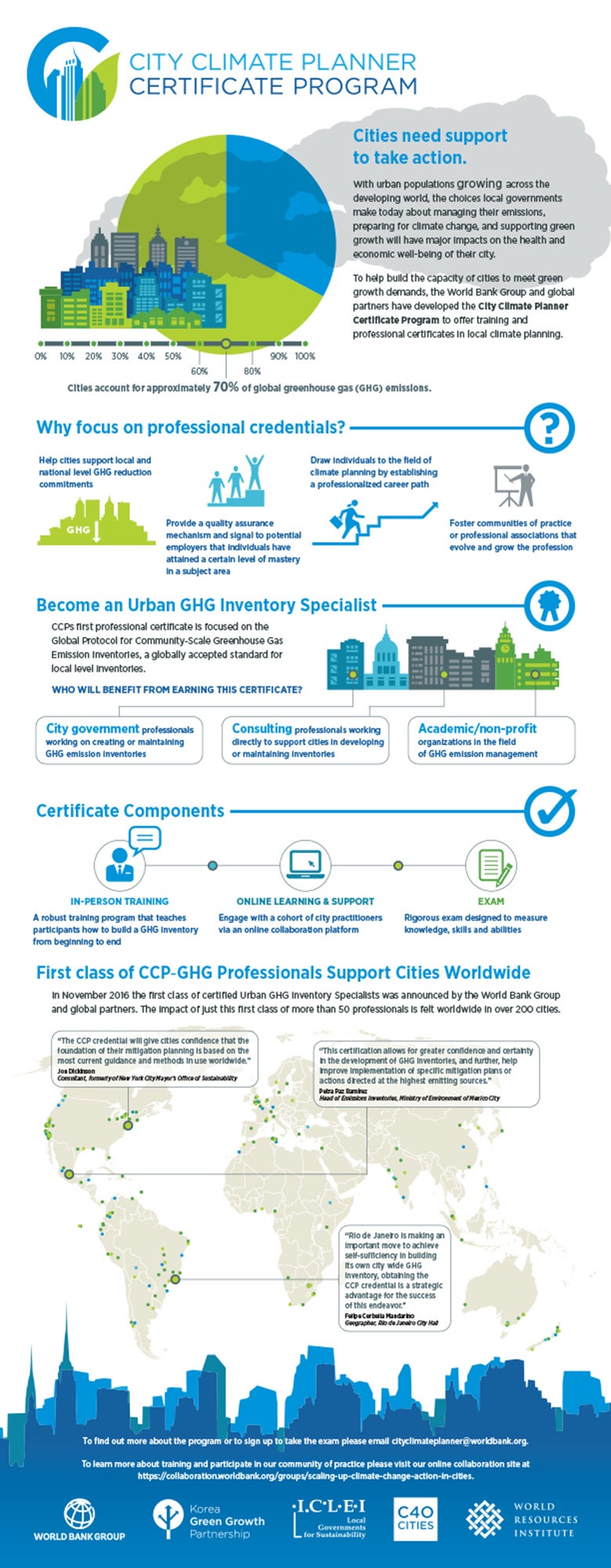Fortunately, in Latin America, many cities are eager to begin their journey to a low-carbon future. At the national level, governments in the region have clearly signaled their commitment to climate action through the specific actions and goals they have pledged in their Nationally Determined Contributions (NDCs). Cities stand ready to act and to help their governments – and the world – meet their climate commitments.
The road to aligning and coordinating climate action is not always easy. In Argentina, for example, the national government and many local governments had been using varying methodologies to quantify the emissions that their residential and business activities produce, which made it hard to compare and track progress toward their goals. The Global Protocol for Community-Scale Greenhouse Gas Emission Inventories (GPC), the leading framework for accounting and reporting urban GHG emissions, solves this problem. The GPC standardizes how data is collected, analyzed and reported globally, and by using it, cities can be consistent in the way they report their emissions and can fluidly aggregate their emissions inventories at a national scale. In Argentina, the national government recently adopted the GPC for use by Argentine cities so that they can compile and gather local inventories in a uniform way.
The World Bank supports capacity building in cities to help them prepare to take urban climate actions that contribute to national commitments. Last September, the City of Buenos Aires was bustling with energy as regional government officials exchanged ideas with national government officials and each other on the low-carbon futures of their cities. Their discussions took place in a climate action planning workshop led by the World Bank and hosted by the Buenos Aires City Government, Argentine Ministry of Interior, Public Works, and Housing and the Ministry of Environment and Sustainable Development, with financial support from the Korea Green Growth Trust Fund. The training was attended by 27 national and local government officials from environment and planning departments in 17 cities from Argentina, Uruguay, Chile, Paraguay and Brazil. The Argentine municipalities present covered almost 30% of the country’s population.
“The City of Montevideo has compiled GHG inventories since 2006, but the city has never quantified the expected effects of mitigation actions. The World Bank’s City Climate Action training provides us with the opportunity to put numbers to our mitigation plans, analyze more effective actions, implement our plan in the short-term.” Adriana Bentancur, Agricultural Engineer, Municipality of Montevideo, Uruguay
The workshop provided some key lessons on how to catalyze urban climate action:
- Get the right people in the right places, together. The World Bank convened cities and national governments in Latin America to kick start an ongoing dialogue on climate action. The workshop began with an introductory panel session on urban resilience, which included panelists from the World Bank and city governments (Buenos Aires, Santa Fe, Santiago de Chile). Participants shared advice on how can cities prepare for natural disasters and urban growth, and gave tips on the different roles that cities and the national government can take in climate action.
- A consistent methodology is the basis for understanding and sharing data. The City Climate Planner (CCP) program, launched in October 2017, seeks to address the global skills gap by providing rigorous training and professional credentials linked to local-level climate planning. CCP’s first module, Urban GHG Inventory, trains stakeholders on the process of building a GPC-aligned city-level GHG emission inventory starting from the initial planning stage all the way to reporting results. This accounting practice directly feeds into the city’s climate action planning process.
- It’s what you do with the data that matters: The CURB tool helps cities turn local data into evidence-based plans that can easily be compared and contrasted with national NDC scenarios. The CURB Tool is a data-driven scenario planning tool. It helps all cities – regardless of how much data or capacity they have – identify and compare green investments in order to develop ambitious, achievable, and cost-effective climate action plans.
“One of the biggest challenges for the City of Catamarca is gaining the support of high-level officials. The CURB Tool provides an easy, fast way to show all stakeholders relevant information about the current situation and what should be done in the city to address climate change.” María Eugenia Segura, Technician in Urban Planning Management , Municipality of San Fernando del Valle de Catamarca, Argentina
How has your city or community benefited from a comprehensive evidenced-based planning approach and what steps led to your achievement?“The CCP and CURB Tool training can greatly benefit the City of Bariloche. The data-driven scenario planning tool will allow us to conduct the urban planning process without having to hire external consultants” Josefina Saskia Uijt den Bogaard, Specialist at the environmental observatory, Municipality of San Carlos de Bariloche, Argentina

- For more information on City Climate Planner Program, please visit cityclimateplanner.org
- Immersive story: Towards a Climate-Smart World: 12 Ways for a Resilient Future
- Feature story: New Data-Driven Planning Tool Helps Cities Advance Climate Action
- Subscribe to our Sustainable Communities newsletter and Flipboard magazine
- Follow @WBG_Cities on Twitter






Join the Conversation